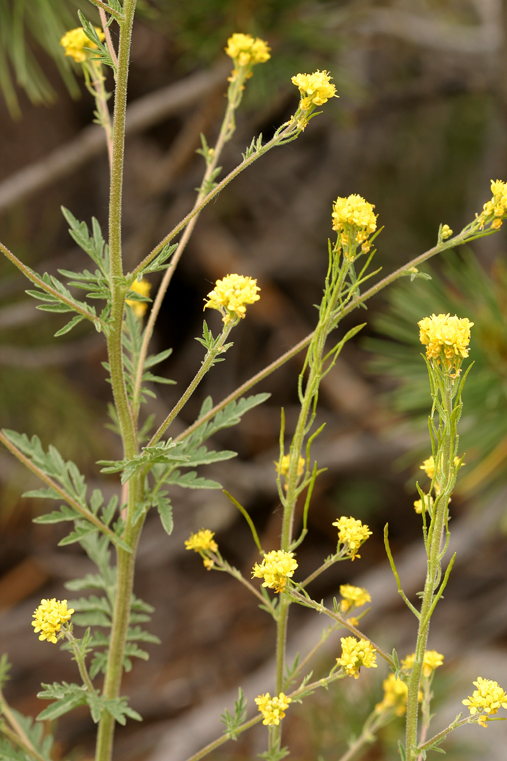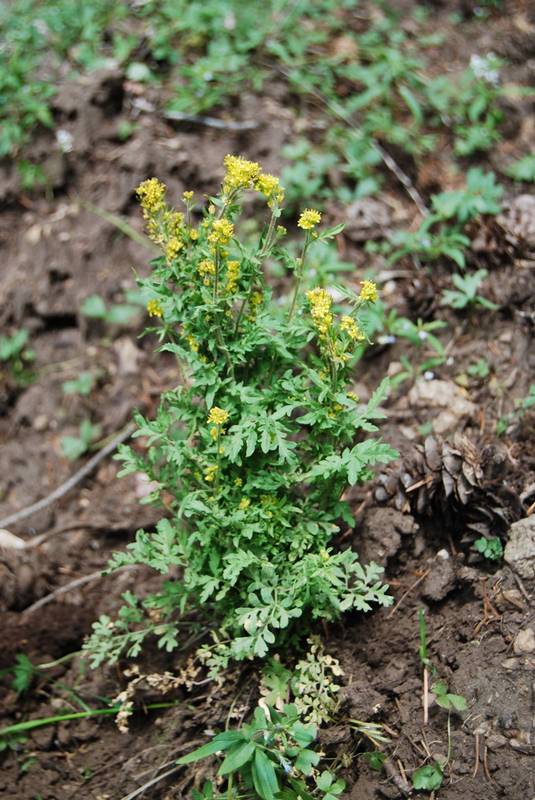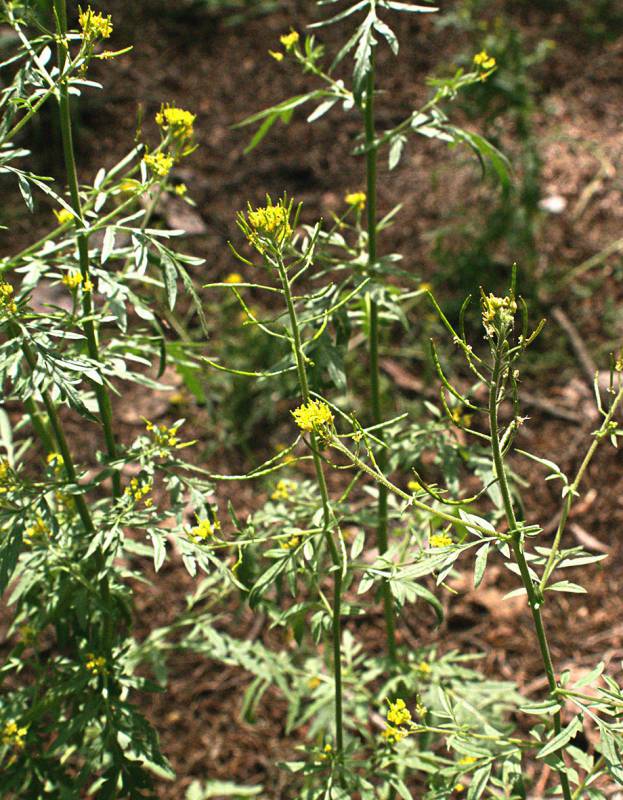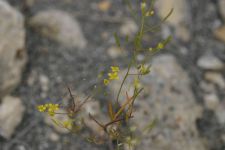Distribution: Occurring east of the Casades crest in Washington; Alaska to California, east to the Rocky Mountains, northern Great Plains, Great Lakes region, and northeastern North America.
Habitat: Sagebrush and confier forest openings from low to middle elevations.
Flowers: April-June
Origin: Native
Growth Duration: Annual
Conservation Status: Not of concern
Pollination: Bees, flies
Biennial, seldom glandular, finely pubescent, sometimes whitish, with dendritic trichomes; stems 2.5-12 dm, erect, unbranched towards base, often branching distally.
Basal leaves petiolate, blade pinnafitid, oblanceolate to obovate in outline, 1.5-10 cm long, margins entire; cauline leaves sessile or nearly sessile, blades becoming smaller and often narrower distally.
Inflorescence racemose, elongating in fruit; fruiting pedicels erect or nearly erect, not curved, 2-8 mm; sepals 4, yellowish, erect, 1-1.8, oblong, faintly pubescent; petals 4, yellow, narrower toward base, 1.2-2 mm long and 0.3-0.6 mm broad; stamens 6, filaments 1.4-2 mm, anthers up to 0.3-0.4 mm.
Siliques erect, commonly strictly appressed to rachis, linear, somewhat torulose, 5-10 mm long and 0.7-1.2 mm broad, acute at each end; distinct midvein on each valve and often on septum; ovaries each contain 14-22 ovules; seeds in 1 series, reddish brown, ellipsoid to slenderly-oblong, 0.8-1.2 mm long and about half as wide.
Publication: Vasc. Pl. Wyoming. 296. 1988.
Descurainia richardsonii O.E. Schulz var. macrosperma O.E. Schulz [HC]
Descurainia richardsonii O.E. Schulz var. richardsonii [HC]
PNW Herbaria: Specimen records of Descurainia incana in the Consortium of Pacific Northwest Herbaria database
WA Flora Checklist: Descurainia incana checklist entry
OregonFlora: Descurainia incana information
E-Flora BC: Descurainia incana atlas page
CalPhotos: Descurainia incana photos








